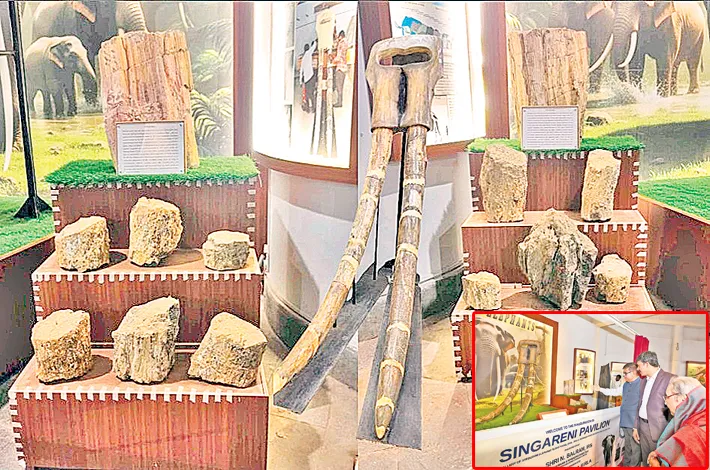Fossilized tusks dating back to millions of years on display
12-10-2025 12:00:00 AM

The fossils were discovered by SCCL officers during mining operations near the Godavari River
Fossils of the Stegodon species elephant, dating back millions of years was discovered in Singareni and now are housed at the Birla Science Centre. A special pavilion-Singareni Pavilion has been set up and was inaugurated by Singareni CMD N Balram and Nirmala Birla, Chairperson of the G P Birla Archaeological, Astronomical and Scientific Institute (GPBAASRI) here on Saturday.
The fossils were discovered by SCCL officers during mining operations near the Godavari River and later verified by experts before being handed over to GPBAASRI for preservation and display.
The Stegodon, an extinct ancestor of modern elephants, lived between 11 million and 6,000 years ago across Asia, Africa, and North America. Known for its enormous 10-foot tusks and height of nearly 13 feet, it was among the largest elephant species ever to exist.
Fossilized tusks of this prehistoric giant, unearthed from the Medipalli Opencast Mine in the Ramagundam Area of Telangana.
Visitors can now have a rare glimpse into Telangana’s prehistoric heritage. The discovery of such fossils in the Godavari basin region is considered a rare and significant find.
“These tusks are a direct connection to Earth’s deep past,” said N. Balaram. “They remind us of the vast evolutionary history beneath our land. Displaying them at the Birla Science Centre will inspire students and researchers while preserving these priceless finds for future generations. This exhibit reflects SCCL’s commitment to promoting scientific awareness and safeguarding India’s geological heritage.”
Nirmala Birla and Dr. K. Mruthyunjaya Reddy, Director of GPBAASRI, were appreciated for their continued efforts in promoting science education. SCCL officials said the company will continue collaborating with GPBAASRI to highlight Telangana’s geological richness and inspire scientific curiosity among students.








